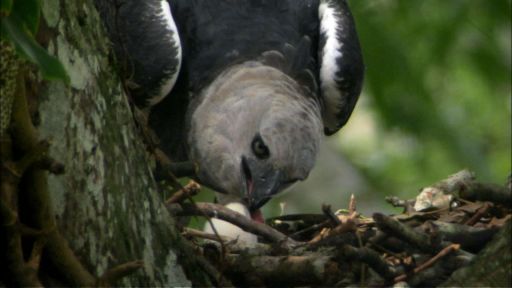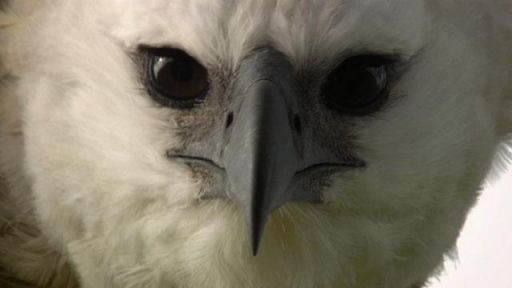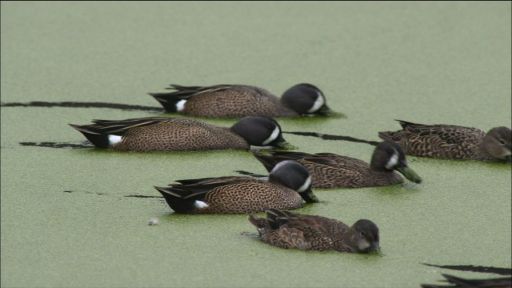Class: Aves
Order: Falconiformes
Family: Accipitridae
Genus: Harpia
Species: Harpia harpyja
Size and Weight: The harpy is one of the largest species of eagle. As is often the case with birds of prey, females are larger than males. The birds can grow to 36-40 inches. Females weigh between 13 to 20 lbs (6 to 9 kg). Males weigh between 9 and 11 lbs (4 to 5 kg). Its wings are relatively short, enabling the bird to maneuver through its thick-forested surroundings.
Plumage: The harpy eagle has dark gray feathers with a white underside. A black band of plumage spans its neck and a fan of gray feathers crowns its head. Male and female plumage is identical.
Diet: A hunting carnivore and an apex predator, the harpy eagle preys primarily on tree-dwelling mammals like sloths, monkeys, and opossums. They will occasionally prey on other birds like macaws, and on reptiles like iguanas. Females generally target larger prey because of their size, leaving smaller prey for the males.
Habitat: The birds live in the rainforests of Central and South America. They prefer large expanses of uninterrupted forest and spend the majority of their time in the forest canopy. They are rarely seen flying over the canopy or in open spaces.
Geography: The harpy eagle is found primarily in South America, in countries like Brazil, Ecuador, Guyana, Suriname, French Guiana, Colombia, Venezuela, Bolivia, Paraguay, Peru, and northeast Argentina. The species is also found in areas of Mexico and Central America, though the populations are far smaller.
Lifespan: The bird’s lifespan is believed to be 25-35 years.
Social Structure and Breeding: Harpy eagles mate for life. Large nests made of sticks and branches and lined with softer materials are built at least 90 feet from the ground in huge trees like the kapok tree, the Brazil nut tree, or the Cambara tree. The harpy couple often reuses the same nest over many years. The female lays two eggs, but once the first egg hatches, the remaining egg is ignored and will not hatch. Both parents spend all their time protecting and raising the chick until it fledges, usually within 6 or 7 months, though it returns to the nest over the next 6-10 months for an occasional free meal. A harpy pair will produce a chick every 2-4 years. Young harpy eagles reach sexual maturity between the ages of 4 and 5.
Conservation Status and Threats: The species is at-risk due to increased habitat loss from development, logging, and agriculture. It’s currently listed as Near Threatened by the IUCN.
Additional Facts:
- The harpy was first described by Linnaeus in his 1758 Systema Naturae as the Vultur harpyja, after the Greek mythological spirit that had the body of an eagle and the face of a human.
- The harpy eagle is most closely related to the crested eagle (Morphnus guianesis) and the New Guinea harpy eagle (Harpyopsis novaeguineae).
- The harpy eagle is Panama’s national bird.
- Its talons can be as large as the claws of a grizzly bear.
- As an apex predator, the harpy eagle is often believed to be a key indicator of the health of the forest ecosystem. Where there are healthy numbers of harpy eagles, there are healthy numbers of the species it preys upon.
- The exact number of harpies is not known. Birdlife International estimated that there were between 20,000 and 50,000 birds in 2009, but those numbers are far from definitive.







